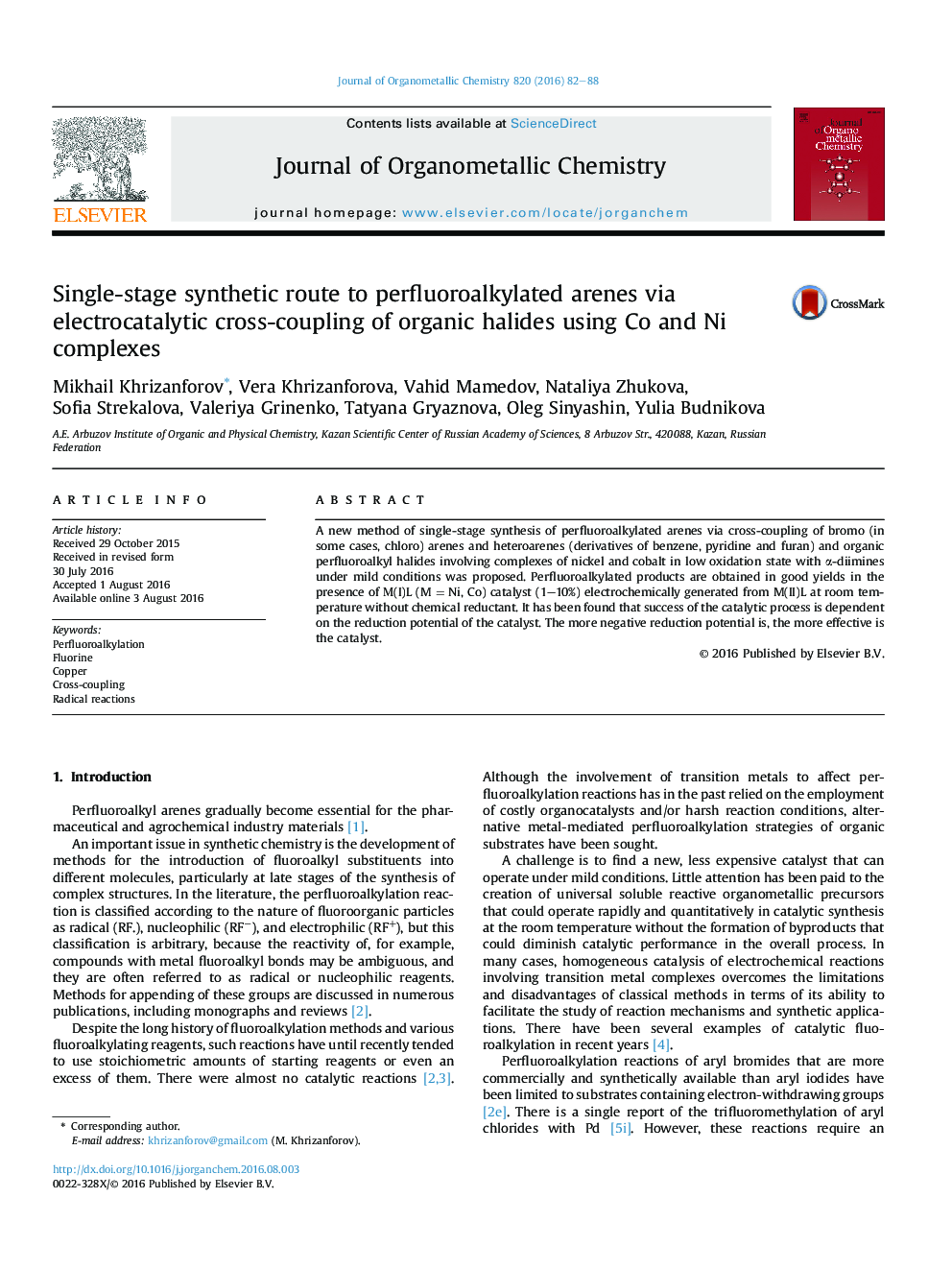| Article ID | Journal | Published Year | Pages | File Type |
|---|---|---|---|---|
| 1321586 | Journal of Organometallic Chemistry | 2016 | 7 Pages |
•The new electrocatalytic cross-coupling method has been demonstrated.•Perfluoroalkylated arenes was obtained in good yields with Co(I), Ni(I) as catalysts.•The dependence catalyst efficiency on reduction potential has been demonstrated.
A new method of single-stage synthesis of perfluoroalkylated arenes via cross-coupling of bromo (in some cases, chloro) arenes and heteroarenes (derivatives of benzene, pyridine and furan) and organic perfluoroalkyl halides involving complexes of nickel and cobalt in low oxidation state with α-diimines under mild conditions was proposed. Perfluoroalkylated products are obtained in good yields in the presence of М(I)L (M = Ni, Co) catalyst (1–10%) electrochemically generated from M(II)L at room temperature without chemical reductant. It has been found that success of the catalytic process is dependent on the reduction potential of the catalyst. The more negative reduction potential is, the more effective is the catalyst.
Graphical abstractFigure optionsDownload full-size imageDownload as PowerPoint slide
